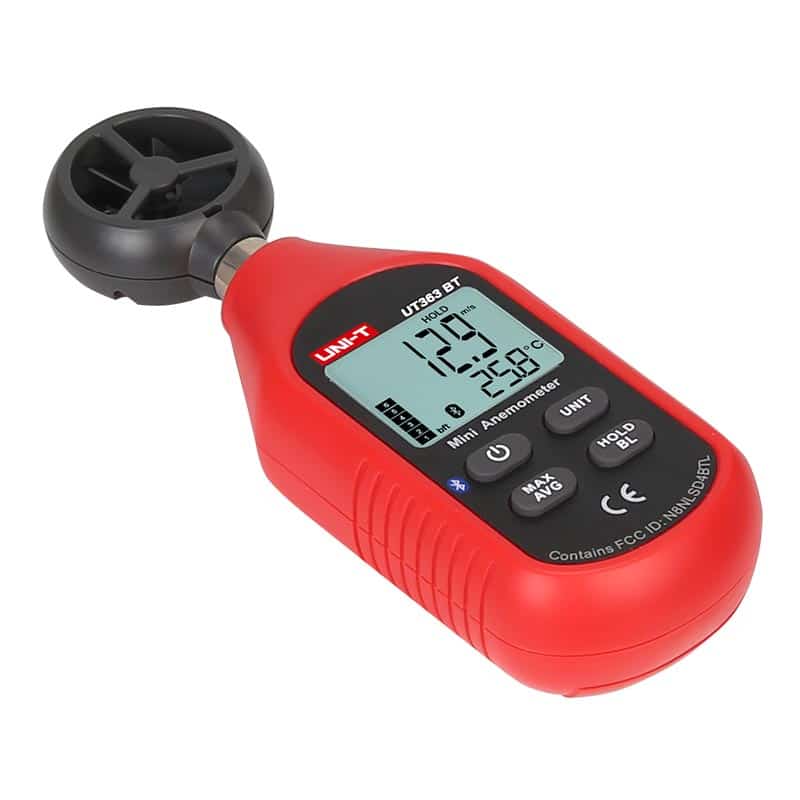How an Anemometer Can Enhance Your Weather Monitoring System
Wiki Article
Anemometers Unveiled: Comprehending Their Importance in Ecological Monitoring and Security Procedures
The function of anemometers in ecological tracking and security procedures is often taken too lightly, yet their value is undeniable. From weather forecasting to aviation safety, anemometers play a vital duty in offering accurate information that informs decision-making processes and boosts overall safety.History of Anemometers
The advancement of anemometers can be traced back to the old worlds where simple wind gauging tools were very first made use of. One of the earliest well-known anemometers was the hemispherical mug anemometer developed by Leon Battista Alberti in the 15th century.Over the years, improvements in modern technology led to the development of even more modern-day anemometers, including ultrasonic anemometers and laser Doppler anemometers, supplying enhanced accuracy and efficiency in measuring wind rate and direction. The background of anemometers showcases an impressive journey of innovation and development in the field of weather forecasting.
Sorts Of Anemometers
Throughout the field of meteorology, different types of anemometers have actually been created to accurately measure wind speed and direction. Sonic anemometers utilize ultrasonic signals to gauge wind rate and direction accurately. Hot-wire anemometers operate based on the principle that the cooling result of wind on a warmed wire is symmetrical to the wind speed.Applications in Meteorology
Having actually discussed the numerous kinds of anemometers made use of in meteorology for gauging wind speed and direction, it is important to discover their sensible applications in the field. Anemometers play a vital function in meteorology by giving real-time and accurate information on wind conditions (anemometer). Meteorologists utilize anemometers to check wind rate and instructions to anticipate climate patterns, issue warnings for severe climate events like twisters, tornados, and storms, and analyze atmospheric problems for aeronautics securityIn meteorology, anemometers aid in recognizing local and local wind patterns, which are vital for predicting weather modifications and determining climatic trends. These gadgets are likewise used in research to examine microclimates, metropolitan warm islands, and air pollution dispersion. Furthermore, anemometers are utilized in agriculture to optimize crop administration methods, such as watering and pesticide application, based upon wind problems.
Value in Air Travel Safety
An important facet of ensuring air travel safety and security depends on the careful tracking of wind conditions utilizing anemometers. Anemometers play a crucial role in aviation by providing real-time data on wind rate and direction, assisting pilots in making educated choices during flight, take-off, and touchdown. Solid and uncertain winds can substantially influence airplane operations, making it crucial for air travel authorities to rely upon precise wind measurements to ensure the security of guests and crew.
In the vibrant setting of air travel, where even minor adjustments in wind speed and instructions can have profound results, anemometers stand as crucial devices for promoting risk-free and protected flight.
Duty in Environmental Study
Exactly how do anemometers contribute to advancements in ecological study? Anemometers play an important function in ecological research study by supplying crucial data on wind speed and direction. This info is essential for understanding numerous atmospheric processes, such as air pollution dispersion, weather patterns, and climate change. By properly gauging wind characteristics, anemometers help scientists analyze the movement of toxins airborne, assess the influence of commercial emissions, and anticipate the spread of contaminants in the setting.

Verdict
In verdict, anemometers have played a critical function in environmental tracking and security measures. Understanding the importance of anemometers is crucial for accurately measuring wind rate and instructions, which is essential for forecasting weather condition patterns, making sure safe aeronautics procedures, and carrying out environmental research studies.One of the earliest well-known anemometers was the hemispherical cup anemometer designed by Leon Battista Alberti in the 15th century. Over the years, improvements in technology led to the growth of even more modern click for more anemometers, including ultrasonic anemometers and laser Doppler anemometers, supplying raised precision and effectiveness in determining wind speed and direction. Hot-wire anemometers operate based on the concept that the cooling this website impact of wind on a heated cable is symmetrical to the wind speed. Meteorologists utilize anemometers to keep track of wind speed and instructions to anticipate weather condition patterns, concern cautions for extreme climate occasions like hurricanes, storms, and cyclones, and assess atmospheric conditions for aeronautics security.
Recognizing the relevance of anemometers is important for accurately measuring wind speed and direction, which is crucial for forecasting climate patterns, making sure safe aeronautics operations, and conducting ecological studies. (anemometer)
Report this wiki page